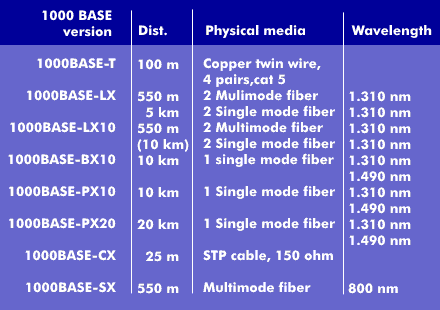IEEE 802.3 1000Base-T
The IEEE 802.3ab 1000Base-T working group is concerned with the standardization of Gigabit Ethernet via Category 5 TP cables for workplace cabling of up to 100 m in length.
The basic standard of this technology includes the MAC layer, which remains unchanged from the classic 10 Mbps Ethernet and Fast Ethernet except for the higher speed. The basic coding principles of 1000Base-T were taken from 100Base- T2 technology, but 1000Base-T works with four wire pairs. To be able to transmit 1 Gbit/s full duplex, each wire pair must transmit 250 Mbit/s in each direction. This transmission speed is still too high for category 5 (cat 5) cables, since category 5 specifies a bandwidth of 100 MHz. A further reduction in speed is achieved by five-stage pulse amplitude modulation(PAM5).
The crosstalk( NEXT and FEXT) between the wire pairs has a disadvantageous effect at these high transmission speeds. The 1000Base-T standard takes these limitations into account and provides for forward error correction( FEC) in addition to echo cancellation. As far as the connector issue is concerned, the HSSDC connector used with Fibre Channel is used.
To cope with the problem of trunking, a layer for link aggregation has been integrated. This layer, which is inserted between higher levels or the Logical Link Control( LLC), ensures that work can be carried out in parallel via several MAC columns. On the one hand, this achieves line redundancy, since work can continue with lower capacity if one line fails; on the other hand, this function achieves a rough scaling of the bandwidth.
1000Base-T is an extension of IEEE 802.3z.

